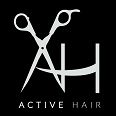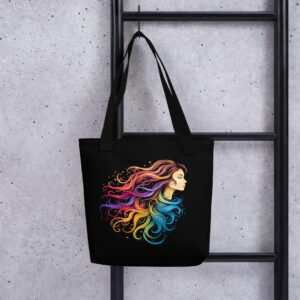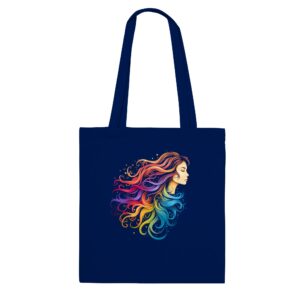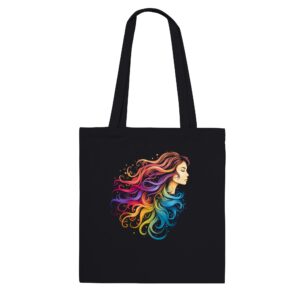Are you tired of dealing with “handbag hair”?
You know, the kind of hair that gets tangled, frizzy, or flattened from carrying a heavy purse or bag on your shoulder? If so, you’re not alone. Many women struggle with this issue, but the good news is that there are some simple steps you can take to avoid it.
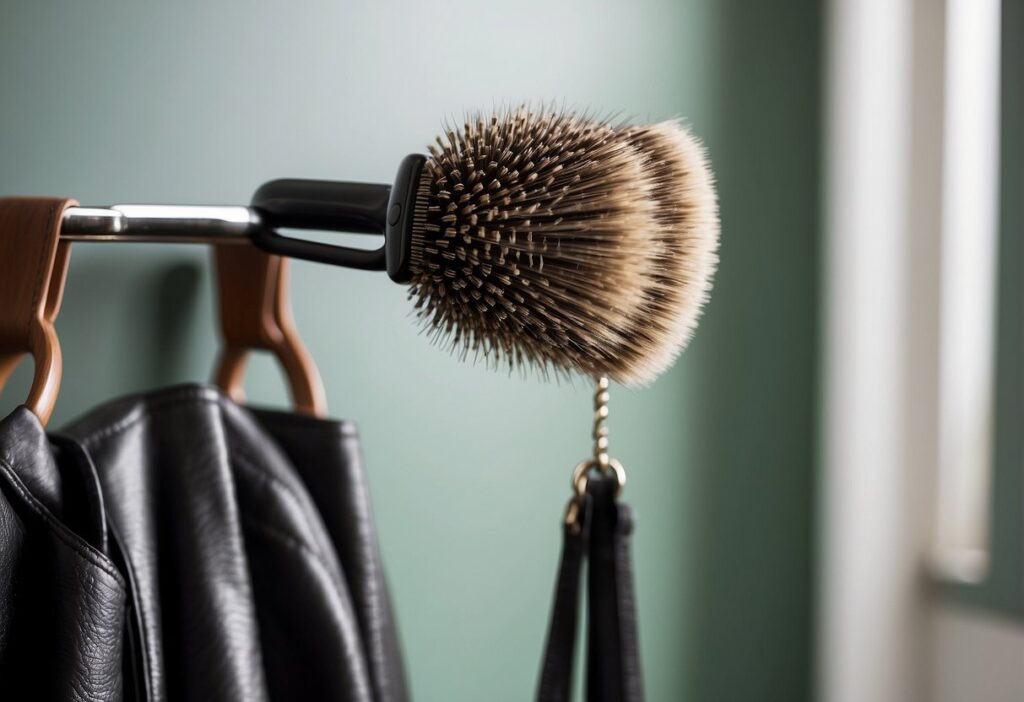
First and foremost, it’s important to choose the right type of bag. Opt for a lightweight option that won’t put too much strain on your shoulder or neck. You may also want to consider a cross-body bag, which can distribute the weight more evenly and reduce the risk of hair damage. Additionally, be mindful of the straps on your bag. Avoid metal or chain straps that can snag and break your hair, and opt for a smooth, wide strap instead.
In addition to choosing the right bag, there are some hair care techniques you can use to prevent handbag hair. For example, try tying your hair back in a loose bun or ponytail before you leave the house. This will keep your hair out of the way and reduce the risk of tangles. You may also want to invest in a good detangling spray or leave-in conditioner, which can help smooth out any knots or frizz caused by your bag. With these tips in mind, you can say goodbye to handbag hair and hello to healthy, beautiful locks!
Understanding Your Hair Type and Texture
If you’re tired of having unruly hair after carrying a handbag, it’s time to understand your hair type and texture. Knowing your hair type and texture is essential for selecting the right hair care products and styling techniques that work best for you.
Identifying Your Hair Type
There are four main hair types: straight, wavy, curly, and coily. To identify your hair type, look at the shape of your hair follicles. Straight hair has round follicles, while wavy hair has oval-shaped follicles. Curly and coily hair has flat or elliptical-shaped follicles.
You can also identify your hair type by examining the texture of your hair. Fine hair has a smaller diameter, while thick hair has a larger diameter. If your hair is somewhere in between, then you have medium hair.
The Role of Texture in Hair Care
Texture refers to the thickness or diameter of individual hair strands. It plays a vital role in determining how your hair looks and behaves. Fine hair is more prone to breakage and damage, while thick hair can be challenging to style and manage.
Knowing your hair texture can help you choose the right hair care products and styling techniques. For example, if you have fine hair, you should use lightweight products that won’t weigh your hair down. If you have thick hair, you should use products that provide extra moisture and hold.
In conclusion, identifying your hair type and texture is the first step towards achieving healthy and manageable hair. By understanding your hair type and texture, you can select the right products and styling techniques that work best for you.
Essential Hair Care Routines
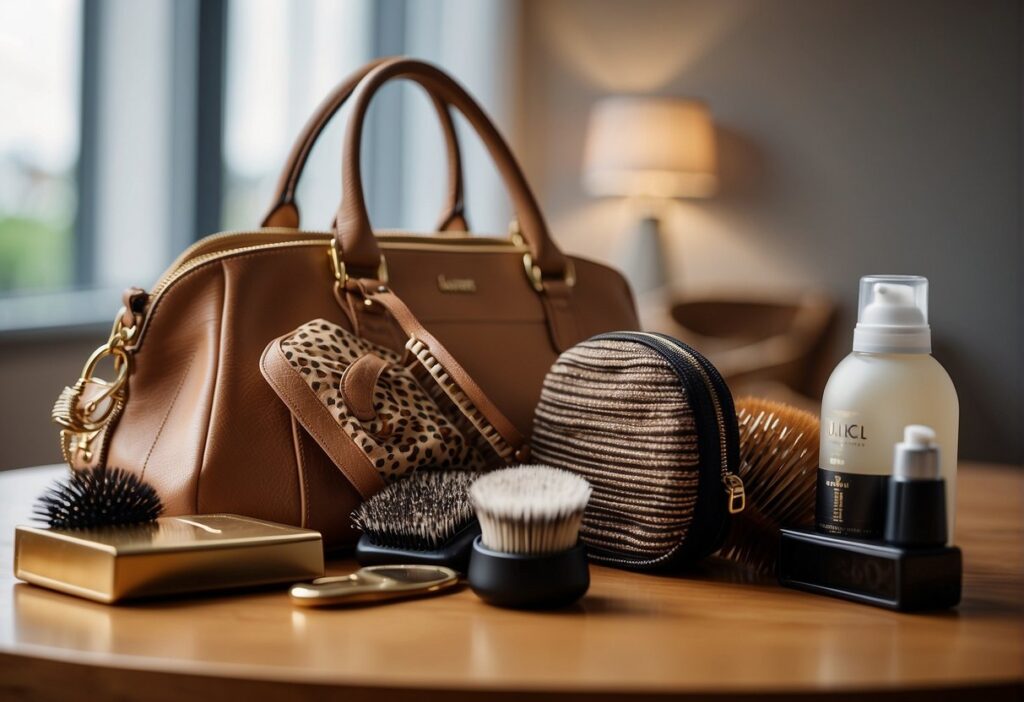
To avoid handbag hair, you need to follow a proper hair care routine. Here are some essential hair care routines that you should follow:
Daily Hair Care
-
Shampooing: Shampoo your hair every other day to keep it clean and free from dirt and oil. Use a mild shampoo that suits your hair type. Massage your scalp gently with your fingertips for a few minutes to improve blood circulation and remove impurities. Rinse thoroughly with lukewarm water.
-
Conditioning: After shampooing, apply a conditioner to your hair. Leave it on for a few minutes and then rinse it off with cool water. Conditioning helps to nourish and moisturize your hair, making it soft and manageable.
-
Protein Treatment: Use a protein treatment once a week to strengthen your hair. Protein treatments help to repair damaged hair and prevent breakage. Apply the treatment to your hair and leave it on for the recommended time before rinsing it off.
Weekly Treatments and Masks
-
Hair Masks: Use a hair mask once a week to deep condition your hair. Hair masks help to nourish and moisturize your hair, making it soft and shiny. Apply the mask to your hair and leave it on for the recommended time before rinsing it off.
-
Oil Treatment: Use an oil treatment once a week to nourish your hair and scalp. Apply the oil to your hair and scalp and massage it in gently. Leave it on for a few hours or overnight before washing it off with shampoo and conditioner.
Remember to choose hair care products that are suitable for your hair type. Regular hair care routines can help you maintain healthy and beautiful hair.
Avoiding Common Hair Damaging Habits
When it comes to handbag hair, there are some common habits that can cause damage to your hair. Here are some things to keep in mind to help avoid hair damage:
Heat Styling and Blow Drying
Heat styling tools like curling irons, straighteners, and hot rollers can cause damage to your hair over time. Using these tools too often can lead to split ends, breakage, and even hair loss. If you must use heat styling tools, make sure to use a heat protectant spray and keep the temperature low.
Blow drying your hair can also cause damage if not done properly. Using a blow dryer on high heat can cause your hair to become dry and brittle. To avoid this, use a low heat setting and hold the dryer at least six inches away from your hair. It’s also a good idea to use a diffuser attachment to help distribute the heat evenly and reduce the risk of damage.
Harmful Hair Products
Using the wrong hair products can also cause damage to your hair. Some products contain harsh chemicals that can strip your hair of its natural oils and cause it to become dry and brittle. Look for products that are gentle and formulated for your hair type.
Avoid using hot water when washing your hair as it can strip your hair of its natural oils and cause it to become dry and brittle. Instead, use lukewarm water and finish with a cold water rinse to help seal the hair cuticle and add shine.
Using a wide-tooth comb is also a good idea, especially if you have curly or wavy hair. This type of comb is less likely to cause breakage and damage to your hair.
By avoiding these common hair damaging habits, you can help keep your hair healthy and avoid handbag hair.
Hair Styling Without Damage
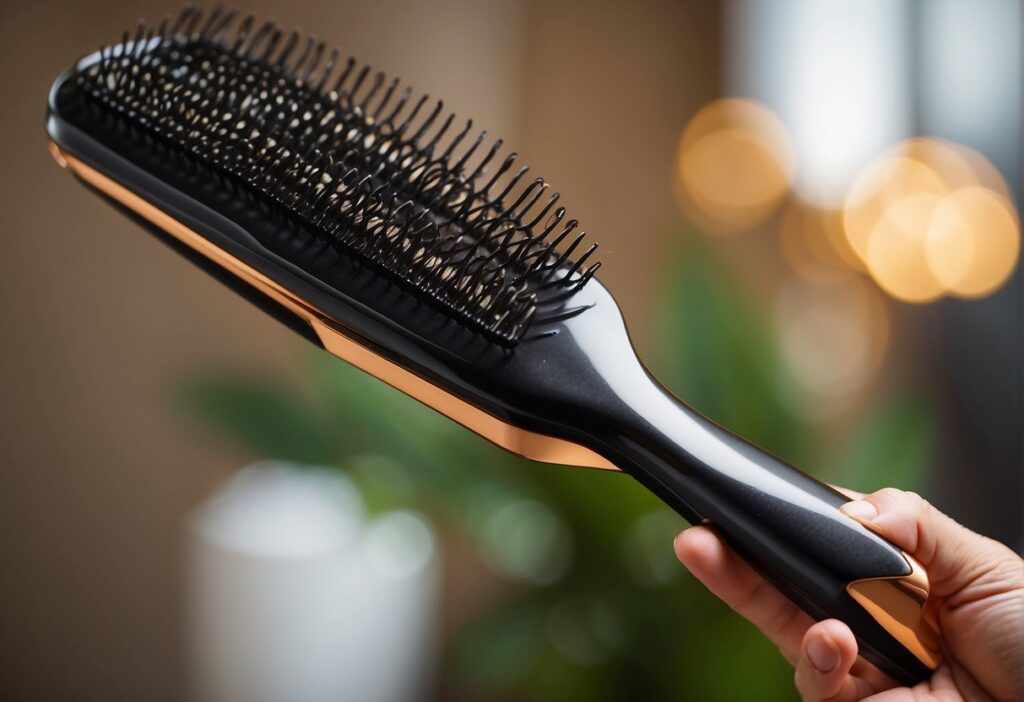
Keeping your hair healthy and looking great can be a challenge, especially when you’re constantly on the go. One of the most common hair problems that many women face is handbag hair. This is when your hair gets tangled, frizzy, or flat after carrying a heavy handbag or wearing a hat for too long. Here are some tips to help you avoid handbag hair and keep your locks looking their best.
Choosing the Right Hair Accessories
One of the easiest ways to avoid handbag hair is to choose the right hair accessories. Avoid using tight hair ties or clips that can pull on your hair and cause damage. Instead, opt for soft scrunchies or hair ties made from silk or satin. These materials are gentle on your hair and won’t cause breakage or split ends.
If you’re wearing a hat or a headband, make sure it’s not too tight. Tight hats or headbands can cause your hair to flatten or become frizzy. Choose hats or headbands that fit comfortably and allow your hair to breathe.
Protective Hairstyles
Another way to avoid handbag hair is to choose protective hairstyles that won’t cause damage. Protective hairstyles are styles that keep your hair tucked away and protected from the elements. These styles can help prevent breakage, split ends, and other types of damage.
Some great protective hairstyles include braids, twists, and buns. These styles keep your hair securely in place and prevent it from getting tangled or frizzy. If you’re looking for a protective style that’s easy to maintain, try a low ponytail or a simple updo.
Remember, hairstyles that pull can cause hair loss. Avoid tight braids, cornrows, and other styles that pull on your hair. These styles can cause traction alopecia, a type of hair loss that occurs when hair is pulled too tightly. If you notice any signs of hair loss, talk to your hairstylist or a dermatologist for advice.
By choosing the right hair accessories and protective hairstyles, you can avoid handbag hair and keep your locks looking healthy and beautiful. With a little bit of care and attention, you can have great-looking hair no matter where you go.
Scalp Care and Its Impact on Hair Health
When it comes to hair care, most people focus on the hair itself and forget about the scalp. However, your scalp plays a crucial role in the health of your hair. Neglecting your scalp can lead to a variety of issues, including hair loss, dandruff, and an itchy, irritated scalp.
Treating Scalp Conditions
If you have a scalp condition such as scalp psoriasis, it’s important to treat it properly. This condition can cause red, scaly patches on the scalp that can be itchy and uncomfortable. There are a variety of treatments available, including medicated shampoos, topical creams, and light therapy. Consult with a dermatologist to find the best treatment plan for you.
Healthy Scalp for Healthy Hair
Maintaining a healthy scalp is essential for healthy hair. Here are a few tips to keep your scalp in good condition:
-
Cleanse regularly: Regularly washing your hair and scalp can help remove dirt, oil, and buildup that can clog hair follicles and lead to hair loss. Use a gentle shampoo and conditioner that is appropriate for your hair type.
-
Exfoliate: Just like the skin on your face and body, your scalp can benefit from exfoliation. Use a scalp scrub or brush to gently exfoliate your scalp and remove dead skin cells.
-
Moisturize: A dry scalp can lead to dandruff and itchiness. Use a moisturizing scalp treatment or oil to keep your scalp hydrated.
-
Eat a healthy diet: A balanced diet that includes plenty of vitamins and minerals can help promote healthy hair growth. Foods that are rich in biotin, vitamin D, and omega-3 fatty acids can be particularly beneficial for your hair and scalp.
By taking care of your scalp, you can help ensure that your hair is healthy and strong. Remember, healthy hair starts at the roots – so don’t neglect your scalp!
